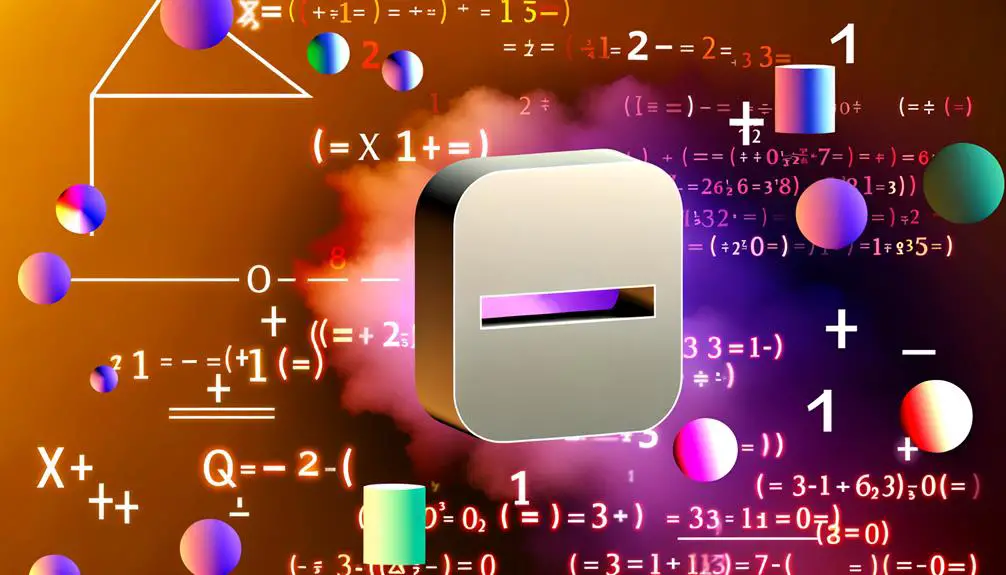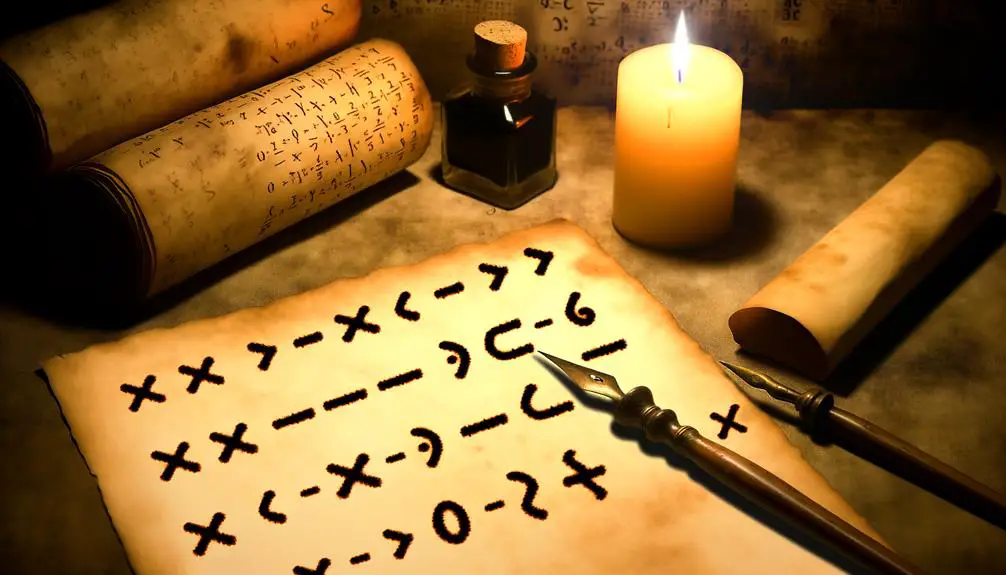Meaning of the Greater Than Symbol in Math and Programming
The greater than symbol (>) signifies that the value on the left is larger than the value on the right. Originating in the 17th century by Thomas Harriot, this symbol revolutionized mathematical notation by enhancing clarity.
It is fundamental in arithmetic, algebra, and calculus, widely used to solve inequalities and analyze data. In advanced contexts, it plays an essential role in optimization, graph theory, and combinatorics.
Beyond mathematics, it supports financial analysis and risk assessment. Misunderstandings, such as reversing the symbol, can lead to significant errors.
Exploring its applications reveals its importance across various fields.

Key Takeaways
- The greater than symbol (>) indicates that the value on the left is larger than the value on the right.
- It was introduced in mathematical notation by Thomas Harriot in 1631.
- This symbol is fundamental in solving inequalities and analyzing data sets in mathematics.
- It is used extensively in advanced mathematics, including calculus, optimization, and discrete mathematics.
- Misinterpreting the symbol or its context can lead to significant errors in mathematical computations and data analysis.
History of the Symbol

The greater than symbol (>) has its origins in the development of mathematical notation, which evolved substantially during the 16th and 17th centuries. This period, marked by the works of mathematicians such as François Viète and René Descartes, saw the formalization of algebraic expressions and inequalities.
The symbol itself was introduced by the English mathematician Thomas Harriot in his work 'Artis Analyticae Praxis' published posthumously in 1631. Harriot's notation provided a concise way to denote the relationship between two values, enhancing mathematical clarity and communication.
The greater than symbol's simplicity and intuitive design contributed to its rapid adoption, establishing it as a fundamental component of mathematical language and a cornerstone in the study of algebra and calculus.
Basic Mathematical Usage
Building upon its historical origins, the greater than symbol (>) is primarily used in basic mathematical operations to compare two quantities, indicating that the value on the left is larger than the value on the right. This simple yet powerful tool is fundamental in elementary arithmetic, algebra, and various branches of mathematics. Understanding its usage is essential for solving inequalities, arranging numbers in order, and analyzing data sets.
Here is a table illustrating basic comparisons:
| Expression | Meaning |
|---|---|
| 5 > 3 | 5 is greater than 3 |
| 10 > 7 | 10 is greater than 7 |
| 8 > 6 | 8 is greater than 6 |
| 15 > 12 | 15 is greater than 12 |
| 20 > 18 | 20 is greater than 18 |
Mastering this symbol aids in developing a solid mathematical foundation.
Advanced Mathematical Applications

In advanced mathematical applications, the greater than symbol plays an important role in complex problem-solving, including calculus, optimization, and discrete mathematics. This symbol is necessary in various contexts:
- Calculus: Inequalities involving the greater than symbol are used in defining intervals for integration and in limits to determine the behavior of functions as they approach specific values.
- Optimization: In linear programming, constraints often use the greater than symbol to define feasible regions and determine best solutions.
- Discrete Mathematics: Inequalities are essential in graph theory and combinatorics to establish bounds and relationships between discrete elements.
Real-World Examples
Greater than symbols frequently appear in financial analysis, where they help compare numerical values to assess profitability, risk, and investment performance.
For instance, when evaluating two companies, analysts might determine that Company A's revenue is greater than Company B's, denoted as Revenue_A > Revenue_B.
This symbol is also crucial in risk assessment, such as when comparing the probability of default between two loans, indicating which loan has a higher risk.
Additionally, in investment strategies, the greater than symbol is used to compare returns, such as when the return on equity (ROE) of one investment surpasses another, written as ROE_Investment1 > ROE_Investment2.
These applications underscore the symbol's vital role in making informed financial decisions.
Common Misunderstandings

While the greater than symbol is invaluable in various applications, it is often misunderstood or misused in several contexts. Such misconceptions can lead to errors in mathematical computations, programming, and data analysis.
Below are three common misunderstandings:
- Reversing the Symbol: Many individuals mistakenly reverse the symbol, using '<' instead of '>', especially under time constraints or stress.
- Context Misinterpretation: In programming languages, the greater than symbol can have different meanings. For instance, '>' in HTML signifies a tag closure, which can confuse beginners.
- Assuming Universality: Some assume that '>' behaves identically across all fields, ignoring discipline-specific nuances, such as in set theory versus algebra.
Understanding these pitfalls enhances clarity and accuracy in various professional and academic endeavors.
Conclusion
The greater than symbol, >, transcends its humble origins to become a beacon of comparison and hierarchy in both mathematics and daily life.
From its historical roots to its advanced applications, this symbol elucidates the fundamental concept of inequality.
Misunderstandings may arise, yet its intrinsic value remains unaltered.
Ultimately, the greater than symbol serves as a silent arbiter, guiding decisions and delineating boundaries in a world governed by numerical precision and logical clarity.






